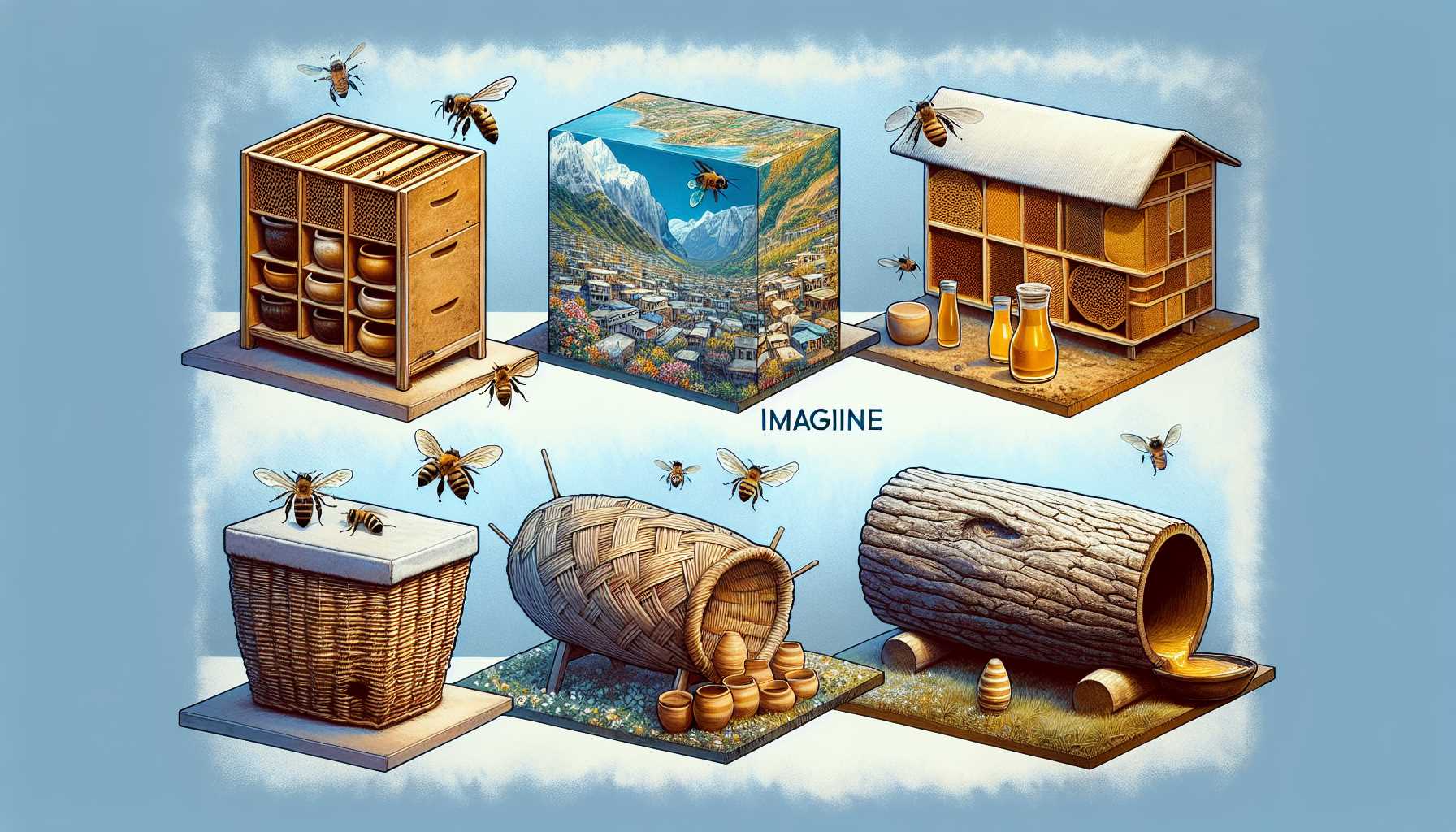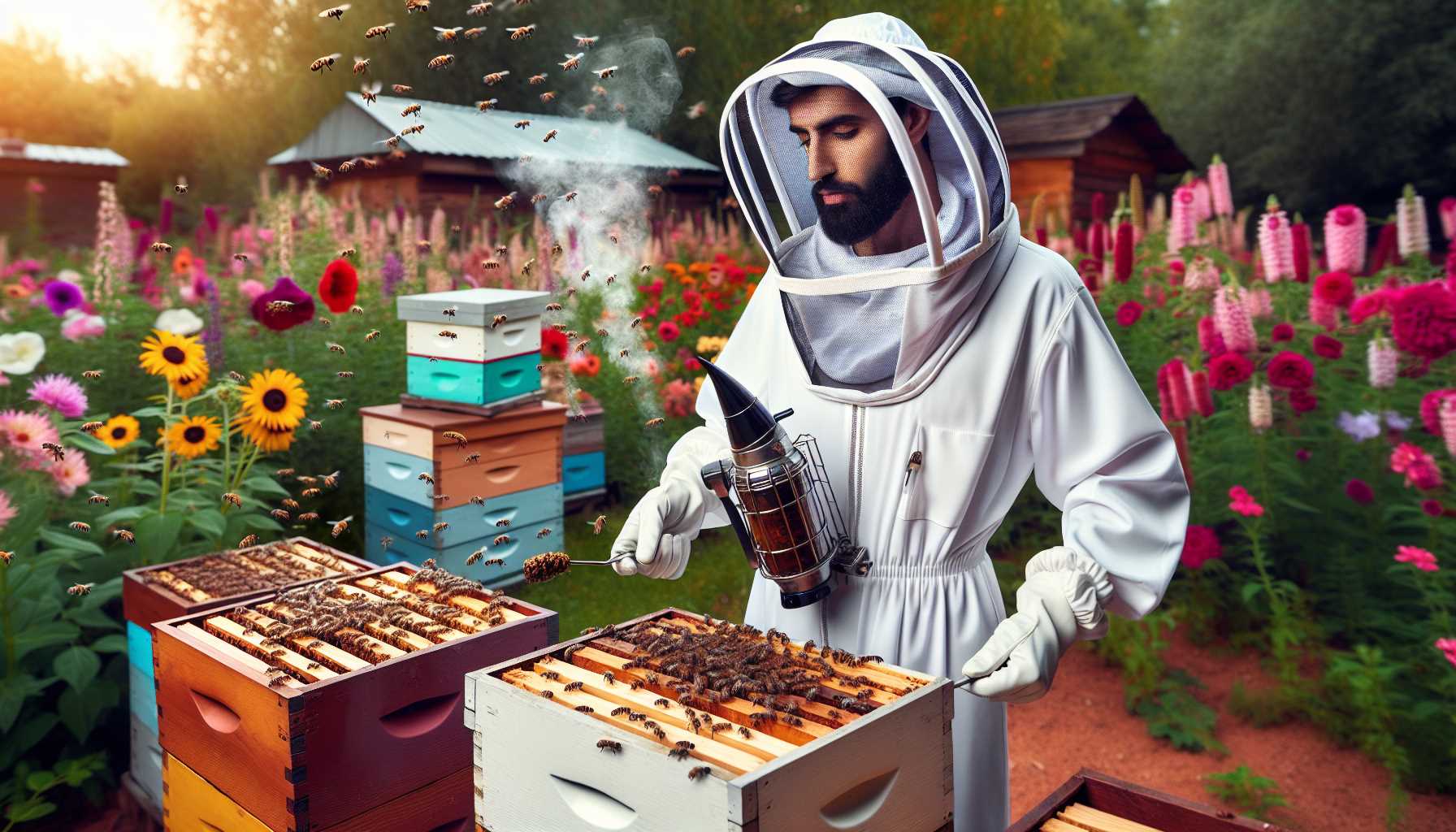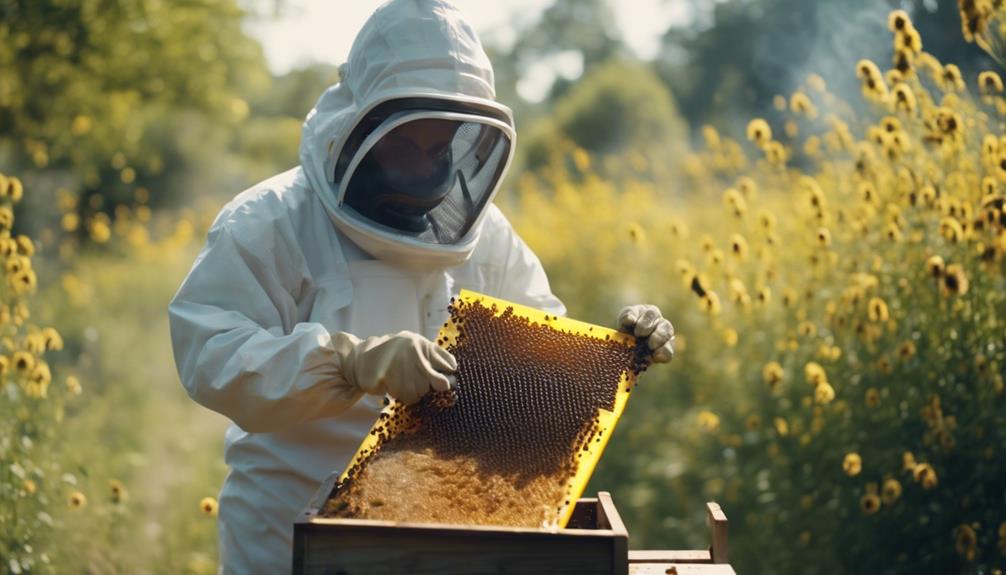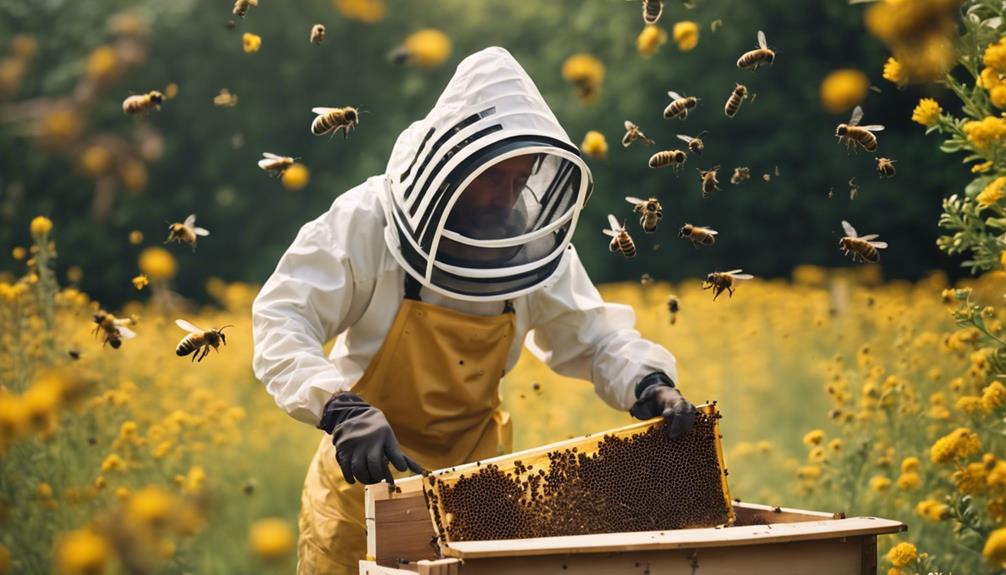Beekeeping, a practice deeply intertwined with human history, traces its origins back to ancient times. The story of how beekeeping first began is a fascinating journey that unveils the ingenuity and resourcefulness of our ancestors.
Exploring the early techniques employed, the cultural significance attached to beekeeping, and the evolution of methods over time sheds light on the intricate relationship between humans and bees.
As we unravel the mysteries behind the beginnings of beekeeping, we gain a deeper understanding of this age-old practice and its relevance in the modern world.
Key Takeaways
- Beekeeping originated thousands of years ago for honey production and medicinal benefits.
- Early beekeepers used natural materials to mimic bees’ habitats for honey collection.
- Beekeeping has cultural significance worldwide, symbolizing fertility, sustenance, and environmental stewardship.
- Modern sustainable beekeeping integrates technology and practices for hive health and conservation efforts.
Ancient Origins of Beekeeping

Beekeeping, with its ancient origins dating back thousands of years, holds a rich and intriguing history that intertwines with human civilization’s development. The practice of beekeeping initially began for the sole purpose of honey production, a sweet and versatile substance highly valued for its taste and medicinal properties.
Ancient civilizations recognized the benefits of honey not only as a food source but also for its healing properties. Bees, in their quest for nectar, inadvertently became essential pollinators, aiding in the reproduction of plants and ensuring biodiversity. The symbiotic relationship between bees and flowering plants led to a deeper understanding of the crucial role that pollination plays in ecosystems.
Through beekeeping, early humans inadvertently enhanced agricultural yields by promoting pollination, thus contributing to the sustenance and growth of communities. This intimate connection between beekeeping, honey production, and pollination benefits highlights the profound impact that bees have had on shaping human history and the natural world.
Early Beekeeping Techniques

Early civilizations employed innovative methods to foster the health and productivity of their bee colonies, utilizing a combination of natural materials and rudimentary structures to support the bees’ activities. These early beekeepers developed techniques that laid the foundation for modern practices, showing a deep understanding of bee behavior and needs.
Three key techniques of early beekeeping include:
- Hive Construction: Ancient beekeepers crafted hives from materials like clay, straw, and wood, creating protective shelters for the bees. These hives were designed to mimic the bees’ natural habitat while providing beekeepers with access to the colonies for management and honey collection.
- Honey Extraction: Early beekeepers used simple methods to extract honey from the hives, such as crushing honeycombs and straining out the honey. This allowed them to enjoy the sweet rewards of their beekeeping efforts while ensuring the bees had enough space to continue producing honey.
- Smoke Utilization: Ancient beekeepers discovered that using smoke calmed the bees during hive inspections, making it easier to work with the colonies. By utilizing smoke from burning materials, they could access the hives without causing undue stress to the bees, a practice still used in modern beekeeping.
Beekeeping in Different Cultures

Exploring the rich tapestry of beekeeping practices across various cultures unveils a captivating narrative of diverse techniques, traditions, and deep-rooted connections to the natural world. Cultural practices surrounding beekeeping differ greatly worldwide, reflecting the unique relationships each community has cultivated with bees.
In some cultures, such as the Mayans and ancient Egyptians, beekeeping was elevated to a sacred art form, symbolizing fertility, community, and industry. The global significance of beekeeping is evident in its role as a vital source of sustenance, income, and environmental stewardship for many societies.
From the nomadic beekeepers of Mongolia to the urban rooftop apiaries of Paris, beekeeping transcends geographical boundaries, offering a universal language of respect for nature and its intricate ecosystems. The methods used, the rituals observed, and the products harvested all contribute to the cultural fabric of beekeeping practices, highlighting the enduring bond between humans and bees that has persisted throughout history.
Evolution of Beekeeping Practices

Throughout history, the evolution of beekeeping practices has been a testament to human ingenuity, adaptability, and unwavering commitment to fostering harmonious relationships with these remarkable pollinators. The journey of beekeeping from ancient times to the present day is a rich tapestry woven with the innovations of passionate beekeepers who sought to enhance their craft and deepen their understanding of these essential insects.
Key Points in the Evolution of Beekeeping Practices:
- Beekeeping Innovations: Over the centuries, beekeepers have developed various tools and techniques to improve honey extraction, hive management, and bee health. Innovations like movable frame hives, protective clothing, and smoker devices have revolutionized beekeeping practices, making them more efficient and sustainable.
- Historical Beekeepers: From ancient civilizations like the Egyptians and Greeks to notable figures like Charles Dadant and Amos Ives Root in the 19th century, historical beekeepers have played a crucial role in shaping beekeeping practices. Their contributions laid the foundation for modern beekeeping methods and inspired generations of bee enthusiasts.
- Cultural Influences: Beekeeping practices have been influenced by diverse cultural beliefs, traditions, and rituals around the world. These cultural nuances have contributed to the unique methods and approaches employed by beekeepers globally, showcasing the rich tapestry of human-bee interactions throughout history.
Modern Beekeeping Methods

In contemporary apiculture, modern beekeeping methods have advanced significantly, incorporating cutting-edge technology and sustainable practices to optimize hive health and honey production. Sustainable practices play a crucial role in modern beekeeping, emphasizing the importance of bee welfare and environmental impact. Techniques such as integrated pest management reduce the need for chemical interventions, promoting the overall health of the hive and the quality of the honey produced.
Urban beekeeping has also gained popularity as more people become interested in supporting pollinators and local ecosystems. Beekeepers in urban areas face unique challenges but also enjoy benefits such as access to diverse forage sources and increased public awareness about the importance of bees. Rooftop hives, community gardens, and green spaces within cities provide opportunities for bees to thrive in urban environments.
Additionally, advancements in hive monitoring technology allow beekeepers to remotely track hive conditions, ensuring early detection of issues and proactive management. By embracing sustainable practices and adapting beekeeping methods to urban settings, modern beekeepers can contribute to bee conservation efforts while enjoying the rewards of harvesting high-quality, ethically produced honey.
Frequently Asked Questions
What Are the Benefits of Beekeeping for the Environment?
Beekeeping offers vital pollination benefits to crops and wild plants, safeguarding biodiversity and ecosystem health. By nurturing bee populations, we support food production, preserve natural habitats, and enhance the overall balance of our environment.
How Do Beekeepers Protect Their Hives From Predators and Pests?
Ensuring hive security is paramount for beekeepers. They employ various strategies like installing entrance reducers, using bee-friendly plants, and setting up physical barriers to deter predators. Integrated pest management methods help maintain healthy hives.
Can Beekeeping Be a Profitable Venture for Beginners?
Beekeeping can be a profitable venture for beginners through strategic marketing of honey products. Investing in quality beekeeping equipment ensures efficient hive management. With dedication and understanding of market demands, beekeepers can cultivate a successful and sustainable business.
Are There Any Regulations or Laws That Beekeepers Need to Follow?
Navigating the world of beekeeping regulations is akin to tending a delicate garden; legal requirements bloom like flowers, intertwining with environmental impact. Beekeepers must uphold responsibilities, safeguarding both bees and surroundings.
How Do Beekeepers Handle Swarming Behavior in Their Hives?
Beekeepers manage swarming behavior through proactive swarming prevention techniques like regular hive inspections, ensuring adequate space, and maintaining colony health. Techniques such as queen rearing help control swarming impulses, fostering a harmonious beekeeping environment.

Roger Thomas is a seasoned beekeeper and hive architect with a deep-seated passion for sustainable living. His fascination with bees has shaped his professional career, giving him practical and theoretical expertise in bee behavior, colony health, and optimal hive conditions. Roger’s technical skills shine in his bespoke hive creations that cater to the specific needs of diverse bee species, while his sustainable practices promote environmental balance and the wellbeing of the bee population.
As he continues his journey in beekeeping, Roger has become a dedicated advocate for responsible practices and an insightful educator in his field. His posts aim to inspire new beekeepers, underline the importance of sustainability, and showcase the remarkable contribution bees make to our ecosystem. Roger invites you to join him as he delves into the world of bees and the rewarding, honey-sweet art of beekeeping.


